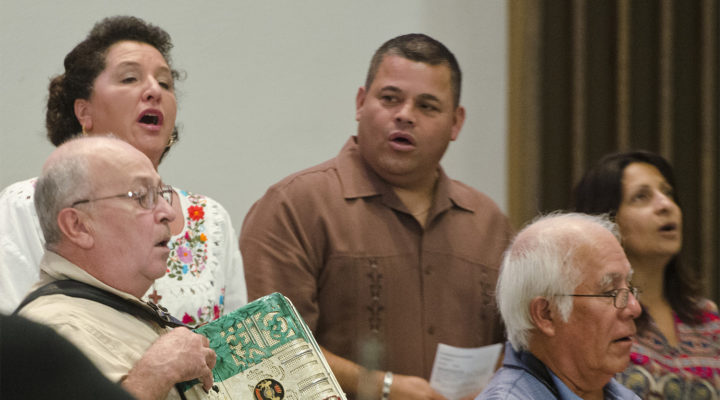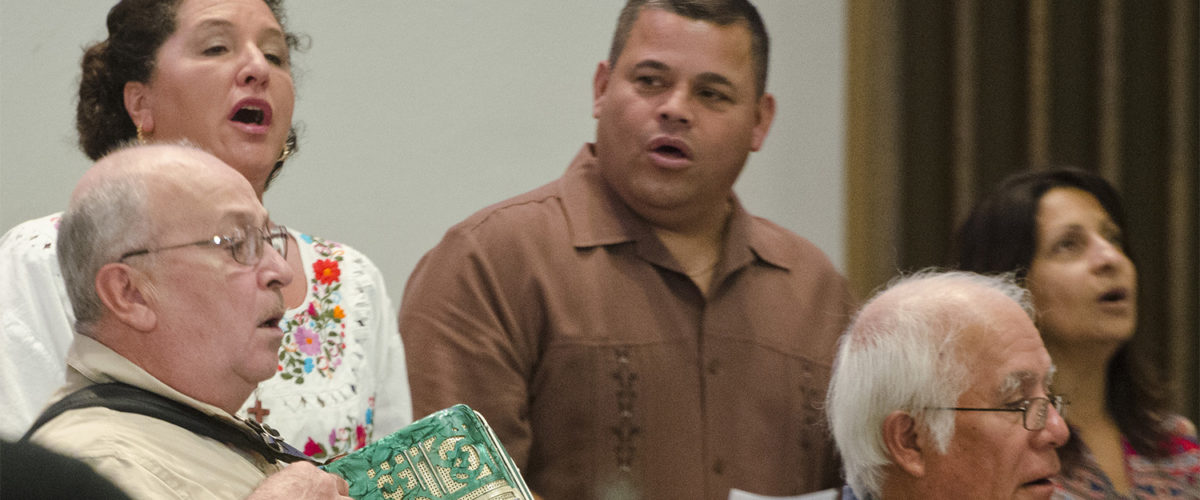Sermons in the United States are said to be getting shorter and shorter.
Maybe. But that’s not the case for pastors officiating funerals for Latino Christians.
“Oh yes, the preaching can last an hour,” said Ruben Ortiz, pastor of Primera Iglesia Bautista Hispana, a Cooperative Baptist congregation in Deltona, Fla.
The testimonies of friends and family can last even longer than that.
“Every part of the service is long and there is a lot of music because we bring our own instruments and our own bands,” he said.
Ortiz said he’s seen services and other mourning rituals last anywhere as long as two days in his native Cuba.
But no one goes hungry, he added.
“Funerals are always food related. Latinos are always about families and food.”
‘Not a quiet affair’
But what Ortiz sees on a regular basis remains largely hidden from most Americans.
“I realized these practices reflect a central part of Latina/o identity formation, yet seem invisible to many, because the death industry in the United States remains so segregated,” Candi Cann said in an article published by Baylor University.
Cann is an assistant professor who teaches death and dying courses at the university.
Last year, she took a group of mostly Anglo students to a Latino funeral home in Central Texas. She said they were fascinated by what they encountered there
“The idea of eating and serving food at a wake was one that my students found not only foreign, but repelling, and they couldn’t imagine eating in the presence of the dead,” she said in the Sept. 12 article.
So Cann has set out to educate the public — and especially the U.S. funeral industry — about the cultural characteristics of Latino bereavement practices.
Her article, “Contemporary Death Practices in the Catholic Latina/o Community” has been published by the journal Thanatos and the Funeral Service Academy has requested Cann prepare training programs about Latino grieving and funeral practices, Baylor reported.
Extended wakes that often last overnight are the hallmark of Latino funerals, she told the university. Mourners bring children, card tables are set up for game playing as the deceased is remembered.
“The wake is not a quiet affair, but often loud and emotional. Generally, from the time the deceased is brought to the funeral home, the person is not left on his or her own.”
“The wake is not a quiet affair, but often loud and emotional,” Cann said in the article. “Generally, from the time the deceased is brought to the funeral home, the person is not left on his or her own.”
Catholicism often has a strong influence on the funeral practices of Latinos — even when they are Protestants, Cann said. Prayer cards depicting Christian saints may be placed around the deceased. Statues are common, too.
“They operate as a sort of souvenir — evidence of the relationship between the bereaved and the deceased and an assertion of the right of the bereaved to grieve,” she said in the Baylor article.
Those practices are common in the U.S. because so many Hispanic families are a blend of Catholics and Protestants, Ortiz said.
Funerals bring all of that together, he said.
“It’s a rainbow of beliefs and practices and rituals,” Ortiz said. “So if somebody has images, we respect that.”
It’s also common that both the Catholic and Protestant sides of families will want their pastors to officiate.
“Sometimes I am sharing the pulpit with a priest,” he said. “That’s no problem.”



